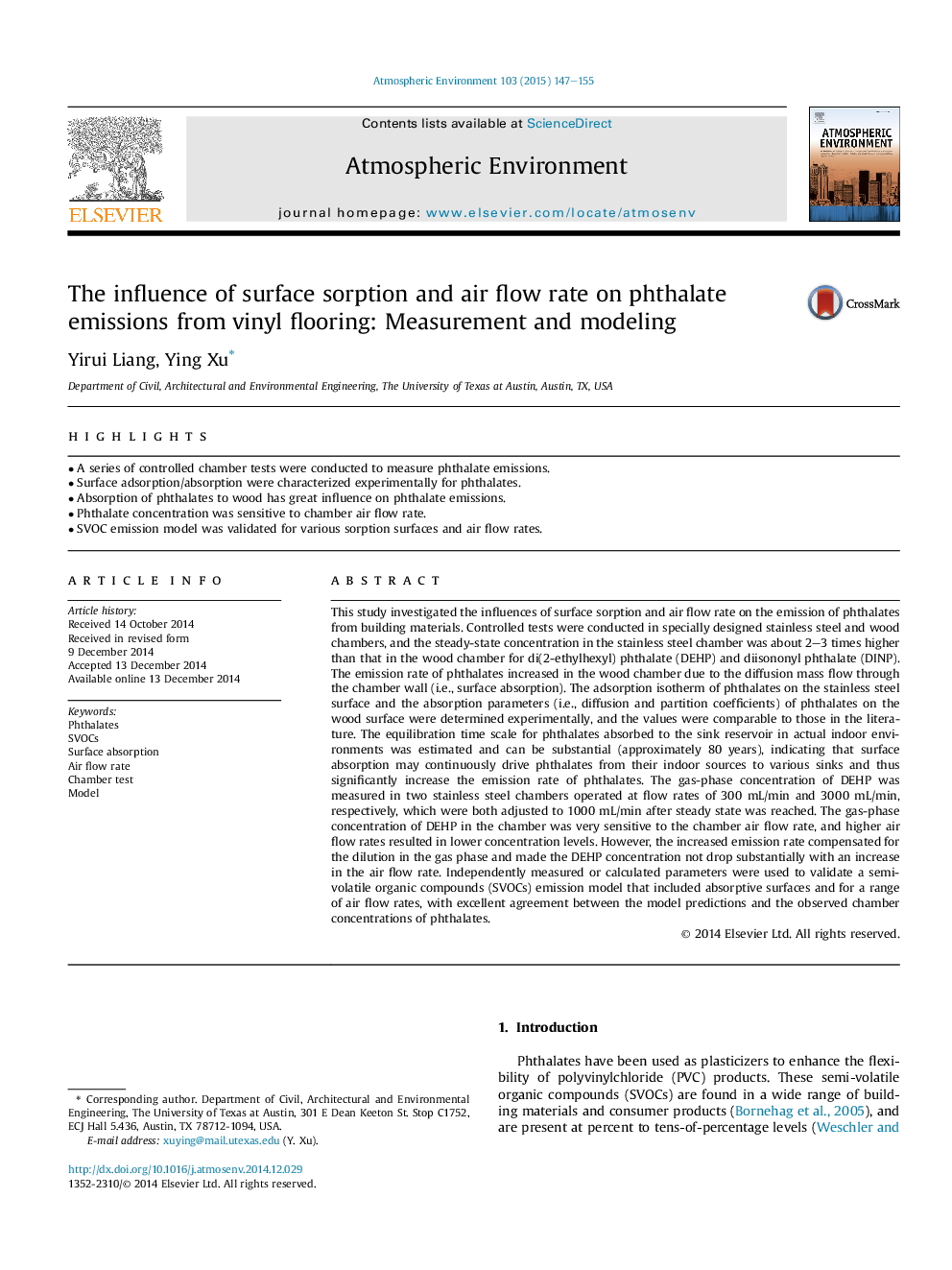| Article ID | Journal | Published Year | Pages | File Type |
|---|---|---|---|---|
| 6338501 | Atmospheric Environment | 2015 | 9 Pages |
Abstract
This study investigated the influences of surface sorption and air flow rate on the emission of phthalates from building materials. Controlled tests were conducted in specially designed stainless steel and wood chambers, and the steady-state concentration in the stainless steel chamber was about 2-3 times higher than that in the wood chamber for di(2-ethylhexyl) phthalate (DEHP) and diisononyl phthalate (DINP). The emission rate of phthalates increased in the wood chamber due to the diffusion mass flow through the chamber wall (i.e., surface absorption). The adsorption isotherm of phthalates on the stainless steel surface and the absorption parameters (i.e., diffusion and partition coefficients) of phthalates on the wood surface were determined experimentally, and the values were comparable to those in the literature. The equilibration time scale for phthalates absorbed to the sink reservoir in actual indoor environments was estimated and can be substantial (approximately 80 years), indicating that surface absorption may continuously drive phthalates from their indoor sources to various sinks and thus significantly increase the emission rate of phthalates. The gas-phase concentration of DEHP was measured in two stainless steel chambers operated at flow rates of 300Â mL/min and 3000Â mL/min, respectively, which were both adjusted to 1000Â mL/min after steady state was reached. The gas-phase concentration of DEHP in the chamber was very sensitive to the chamber air flow rate, and higher air flow rates resulted in lower concentration levels. However, the increased emission rate compensated for the dilution in the gas phase and made the DEHP concentration not drop substantially with an increase in the air flow rate. Independently measured or calculated parameters were used to validate a semi-volatile organic compounds (SVOCs) emission model that included absorptive surfaces and for a range of air flow rates, with excellent agreement between the model predictions and the observed chamber concentrations of phthalates.
Related Topics
Physical Sciences and Engineering
Earth and Planetary Sciences
Atmospheric Science
Authors
Yirui Liang, Ying Xu,
